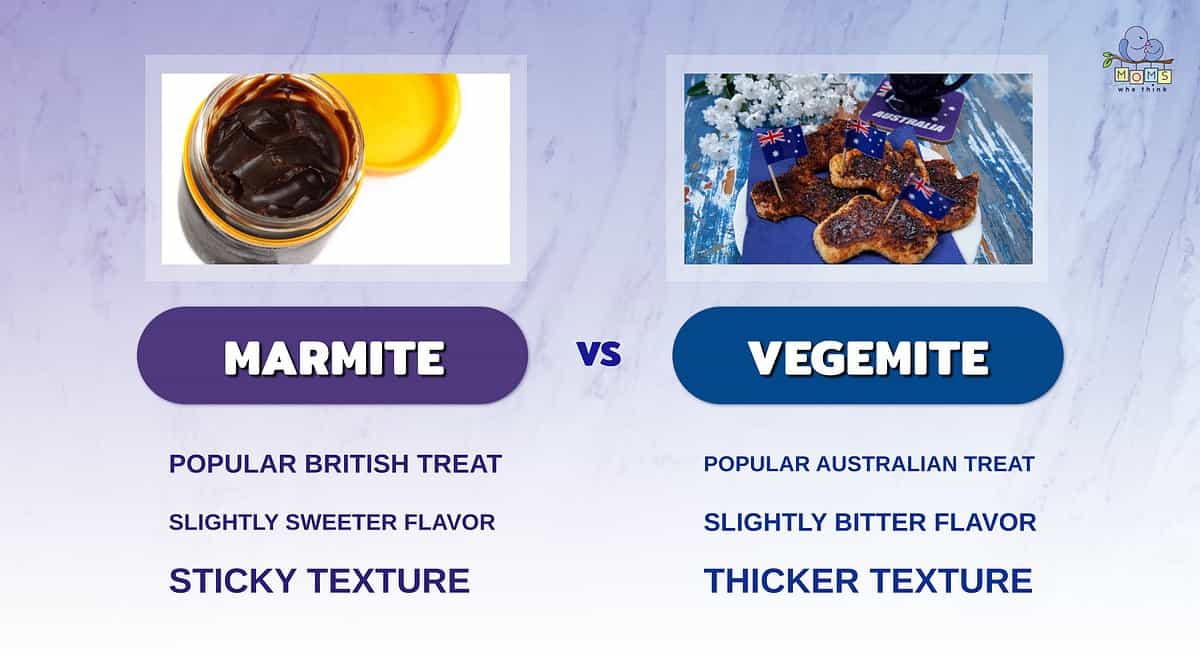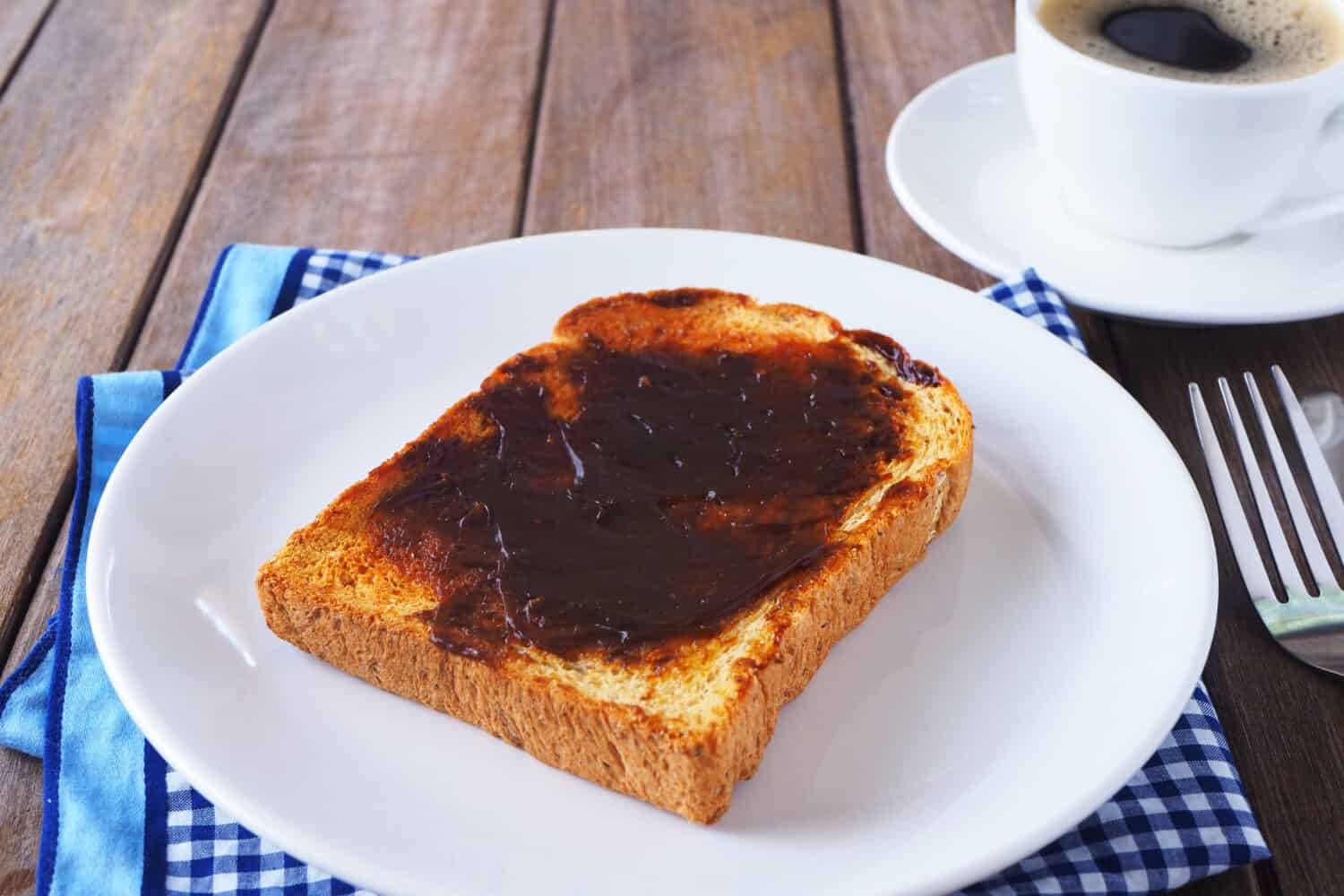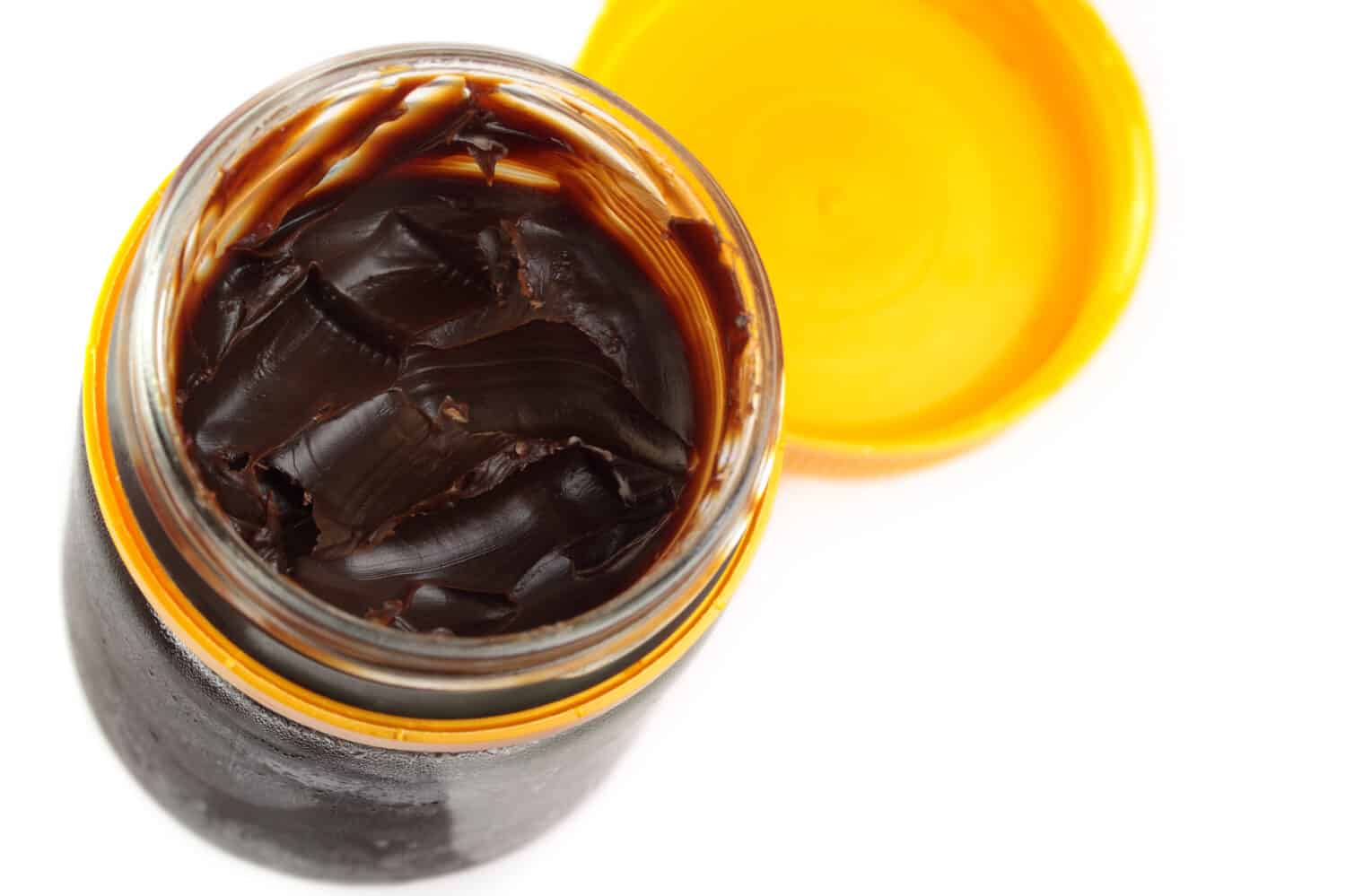If you’re not from the UK or Australia, you may not have tried Marmite or Vegemite. Both are savory spreads made from brewer’s yeast extract, often served on toast or sandwiches. The dark brown spreads lend an umami flavor to foods and can be used as a soy sauce substitute. Their yellow-lidded jars can be tricky to find outside the countries where they are most popular.
Even though both spreads look similar and are made in a similar manner, they have different flavor profiles. Some people find Marmite and Vegemite interchangeable, but most fans have a strong preference for one or the other. Keep reading to find out how Marmite and Vegemite are different and what each of the beloved spreads tastes like.

What is Marmite?
Although Marmite is considered a British food, the process for making it was discovered in the late 1800s by a German scientist named Justus von Liebig. He found that the yeast by-product from making beer could be concentrated into a yeast extract rich in B vitamins. In 1902, the Marmite Food Company began making the spread at a factory in Burton-on-Trent, England. It’s still made there today.
Marmite has a dark brown, sticky appearance similar to molasses. It is like a pungent soy sauce in paste form, and high in sodium. Traditionally, Marmite is spread onto toast with butter or added to a cheese sandwich. It is also used to bring umami flavor to soups, stews, sauces, and other recipes.
Although one serving provides nearly one-tenth of the daily recommended value for sodium, Marmite is a good source of riboflavin, niacin, thiamine, and vitamin B12. Marmite is vegan and halal, and the 70g jar is certified kosher.

©PageSeven/Shutterstock.com
What Does Marmite Taste Like?
Marmite’s slogan is, “You either love it or hate it.” So the company is well aware that it is an acquired taste. It is strong, yeasty, and salty, somewhat like soy sauce in a smooth paste form. It has a slightly sweet undertone but contains no sugar. It’s also fat-free.
Marmite has added several new variations of yeast spread over the years, including Marmite XO, an “extra old” version that is said to taste more like the original recipe. Yeast-spread fans can also get reduced salt, truffle, and chili versions of Marmite. There’s even a Marmite brand of crunchy peanut butter.

©IngeBlessas/Shutterstock.com
What is Vegemite?
Vegemite is often called Marmite’s “Australian copycat’’ because its story didn’t begin until 20 years after the invention of Marmite. In fact, Australians had already embraced Marmite and loved it so much that they were reluctant even to try the new Australian version. But World War I interrupted the delivery of Marmite to Australia and made more people willing to give the newer version a chance. By 1942, Vegemite had become a staple in every Australian’s pantry.
Vegemite is also a burnt dark brown but almost black in color. Instead of having a sticky texture, Vegemite is very thick, like peanut butter. It’s a popular spread on toast, crackers, and sandwiches and is used to flavor soups, stews, casseroles, and other dishes. You can also buy Vegemite-filled pastries in Australia. Like its British predecessor, Vegemite is rich in B vitamins and a good protein supplement for vegans and vegetarians. It is also fat-free, sugar-free, vegan, halal, and kosher.
What Does Vegemite Taste Like?
According to the company’s website, Vegemite’s slogan is, “Tastes like Australia.” Like Marmite, Vegemite has an intense and salty taste. But while Marmite is slightly sweet, Vegemite is slightly bitter. As its name indicates, Vegemite’s yeast extract base is flavored with vegetable extract, malt extract, and spices. Some have said its smell and aftertaste are unappealing, but its fans disagree.
To expand its fan base, Vegemite now offers gluten-free and lower-sodium versions of its beloved spread. Vegemite & Cheese spread is another option that plays on the classic combination of yeast spread and a cheese sandwich. Made with Bega cream cheese, it has a milder and creamier flavor than plain Vegemite and may be more palatable to those who find straight-up yeast extract spread too intense.

©Cavan-Images/Shutterstock.com
Which Yeast Spread Should You Try First?
If you’re a fan of strong umami tastes, you will probably enjoy both brands of yeast spread. Since Marmite is said to have a milder, sweeter flavor, it is a good starter choice for those who’ve never eaten yeast extract spread before. However, if you enjoy black coffee, radicchio, and other bitter flavors, you’ll probably find Vegemite’s slightly bitter edge appealing.
While marmite and vegemite are savory spreads, they each have different tastes and characteristics. Take a look at some of these differences to see which would potentially be your favorite:
- Marmite is known for its stickier texture, while vegemite has a thicker consistency, similar to peanut butter, making it easier to spread.
- Vegemite is a popular treat in the UK. On the other hand, vegemite is a favorite among Australians.
- Marmite has a slightly sweet undertone yet contains no sugar.
- Vegemite has a more bitter flavor than its counterpart.
The image featured at the top of this post is ©Shane White/Shutterstock.com.

